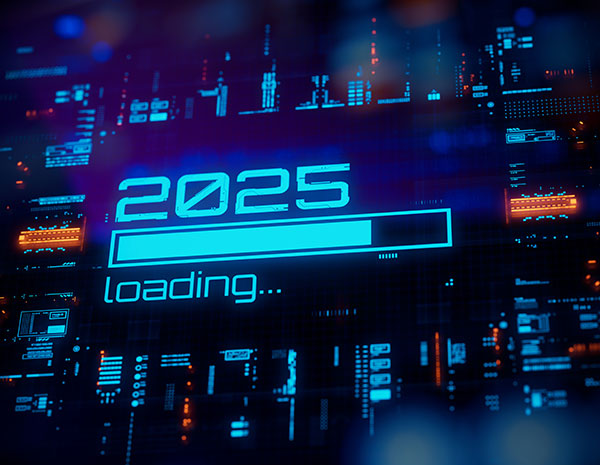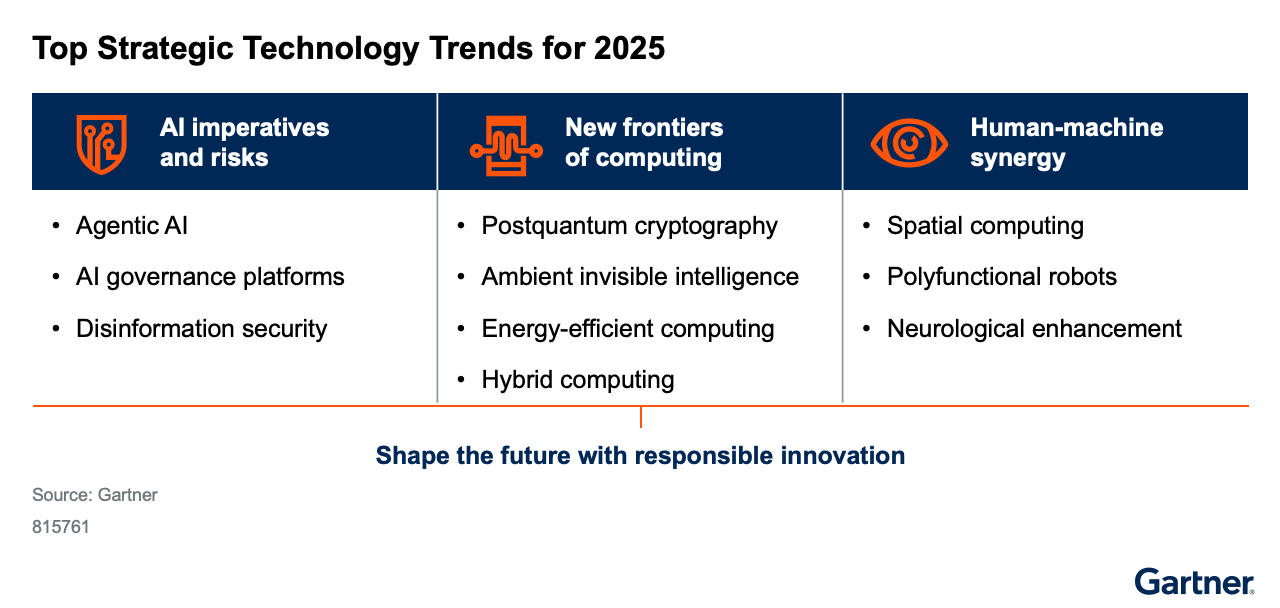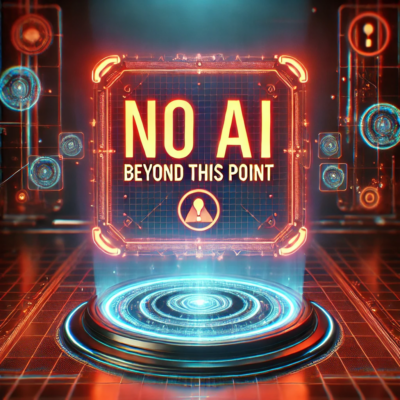Gartner, a leading global research and advisory company, publishes annual forecasts that help decision-makers to recognize and prepare for upcoming technologies and strategic innovations at an early stage.
For the year 2025, Gartner has identified technologies that will have a significant impact on the economy and society and offer new challenges and opportunities. The trends are aimed at companies in the automotive, manufacturing, public sector, energy and insurance sectors and offer new perspectives in digital transformation. Here are the most important technological developments for 2025 and their significance for specific industries:
Autonomous AI agents: Automated decisions and tasks
Autonomous AI agents are systems that can make decisions independently and carry out tasks based on predefined goals. This new generation of AI is not only capable of implementing simple instructions, but can also take independent initiatives to optimize processes.
Automotive and manufacturing industry
AI agents can improve predictive maintenance processes and adapt production lines autonomously. This enables more efficient use of resources and significantly reduces unplanned downtime.
Public sector and energy industry
In the public sector, AI agents could process requests in citizen services and speed up processes. In the energy sector, they help to optimize smart grids by regulating consumption peaks and balancing grid loads.
Insurance industry
The insurance industry benefits from the automatic processing of simple claims. This reduces human effort and increases customer satisfaction.
Risks: Autonomous AI agents require high security standards and reliable governance systems. Their ability to make independent decisions harbors risks if wrong decisions are made, which could potentially cause great harm.
Especially in the healthcare or financial sector, wrong decisions could have serious consequences, which is why ethical standards and control mechanisms are essential to minimize risks and ensure the responsible use of AI. (Further literature on the topic here: [2204.03245] HIT-UAV: A high-altitude infrared thermal dataset for Unmanned Aerial Vehicle-based object detection)
Post-quantum cryptography: Protection against new threats from quantum computing
Quantum computers pose a threat to traditional encryption techniques. Post-quantum cryptography (PQC) makes it possible to encrypt data in such a way that it is also secure against the computing capabilities of future quantum computers.
The National Institute of Standards and Technology (NIST) is already developing algorithms that will meet the requirements of this new era and also ensure long-term data security.
Automotive and manufacturing sector
The protection of sensitive production data and algorithms is becoming increasingly important, as stolen data can pose a considerable risk in the long term.
Energy industry and insurance companies
As energy companies and insurance companies process enormous amounts of sensitive data, PQC offers long-term protection and helps to maintain confidentiality and compliance with data protection guidelines.
Public sector
Governments and public authorities are responsible for protecting the personal data of their citizens. PQC helps to keep sensitive information secure and meet data security requirements.
Risks: The implementation of PQC is complex and can affect the performance of existing systems. The replacement of encryption algorithms often requires new developments that are time-consuming and costly. Companies must also ensure that their IT teams are prepared for future quantum threats and can guarantee so-called “crypto-agility” in order to update algorithms flexibly.
Energy-efficient computing: sustainable IT infrastructures
In view of the growing energy requirements for data centers and IT infrastructures, energy-efficient computing is becoming increasingly important. This development aims to reduce the energy consumption of IT and increase efficiency at the same time. According to a study by IDC, energy-efficient data centers could significantly reduce CO₂ emissions by 2030.
Automotive and manufacturing sector
In these sectors, energy-efficient computing can reduce the consumption of resources in production. This enables companies to reduce their carbon footprint and optimize their production processes.
Energy sector
Energy-efficient computing can help companies operate more sustainably by using renewable energy sources and reducing power consumption in data centers.
Public sector and insurance companies
Public authorities and insurers benefit from energy-efficient systems as they can reduce operating costs while complying with environmental regulations.
Risks: Switching to energy-efficient systems requires a high initial investment, especially in hardware, which can reduce the return on investment (ROI). High energy costs and the rising cost of green energy sources add to the burden of switching. However, companies can benefit from government subsidies or partnerships with renewable energy providers, which could make the transition easier.
Neurological enhancements: Human-machine integration
Neurological enhancements, such as brain-machine interfaces, open up completely new possibilities for interaction between humans and machines. Such interfaces improve learning, decision-making and adaptation to individual needs.
Automotive industry and manufacturing
These technologies could be used in training processes to support employees in real time. They enable employees to react more quickly to new requirements and work more efficiently.
Public sector and insurance companies
These interfaces could optimize citizen services or consultations by helping employees to respond more quickly and accurately to customer inquiries.
Risks: Neurological technologies raise complex ethical and security issues. Direct interfaces to the human brain pose privacy risks and could potentially make personal thoughts and data accessible to third parties. Companies must adhere to strict data protection measures and ethical standards to protect data integrity and prevent misuse.
Disinformation security: protection against targeted misinformation
Disinformation security is increasingly necessary to protect organizations from targeted misinformation that can damage brand image or public trust.
Insurance and energy sectors
Insurers and energy companies depend on public trust. Technologies to detect and defend against disinformation campaigns help maintain integrity and trust.
Automotive and manufacturing sector
Reputation protection is also important here, as targeted attacks on companies can undermine consumer confidence in brands and products.
Public sector
Public authorities could use disinformation security to ensure that citizens have access to reliable information and that public institutions maintain their edge in terms of trust.
Risks: Disinformation can cause considerable reputational damage and is often difficult to prove. The use of deepfakes makes it more difficult to identify genuine information. Companies and government agencies are therefore increasingly using AI-supported systems to identify and defend against false information in order to detect targeted attacks at an early stage and secure their brand protection.
Conclusion: Strategic decisions for a successful future
The Gartner trends for 2025 show the extent to which technology is changing the economy. For the automotive industry, manufacturing, the public sector, the energy industry and insurance companies, it is important to pursue technological innovations with responsibility and strategy.
Companies should not only exploit the potential to increase efficiency, but also consider ethical standards and sustainability aspects to ensure trust and long-term success.
For more detailed information or to implement the technologies described, contact our team of experts. We will accompany you on the path to the digital future and develop customized solutions that meet your requirements.
Get to know our experts!
Our Research & Development team is ready to help you.





